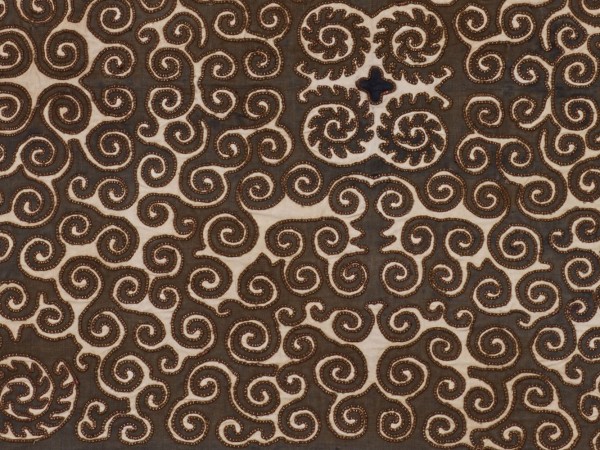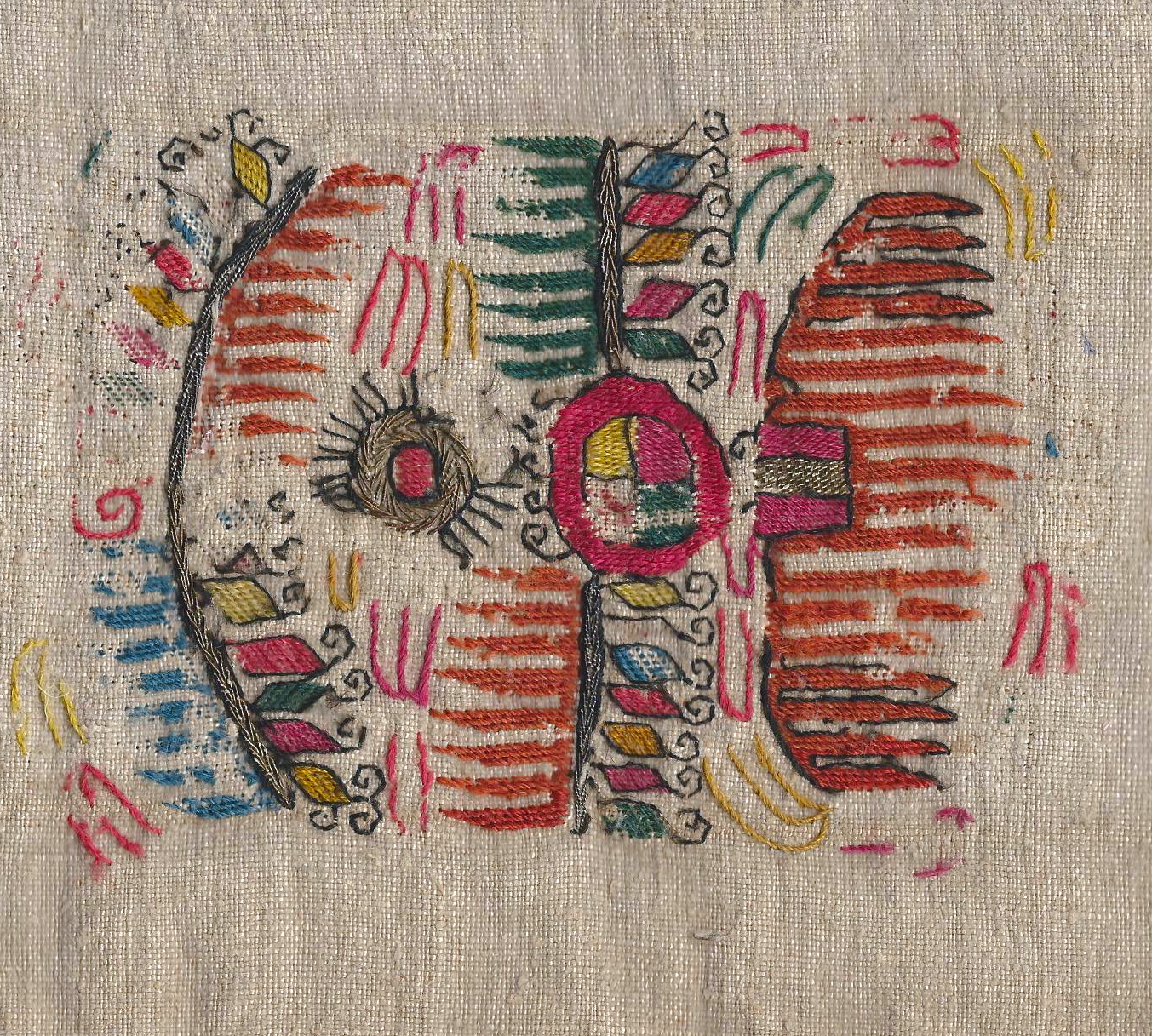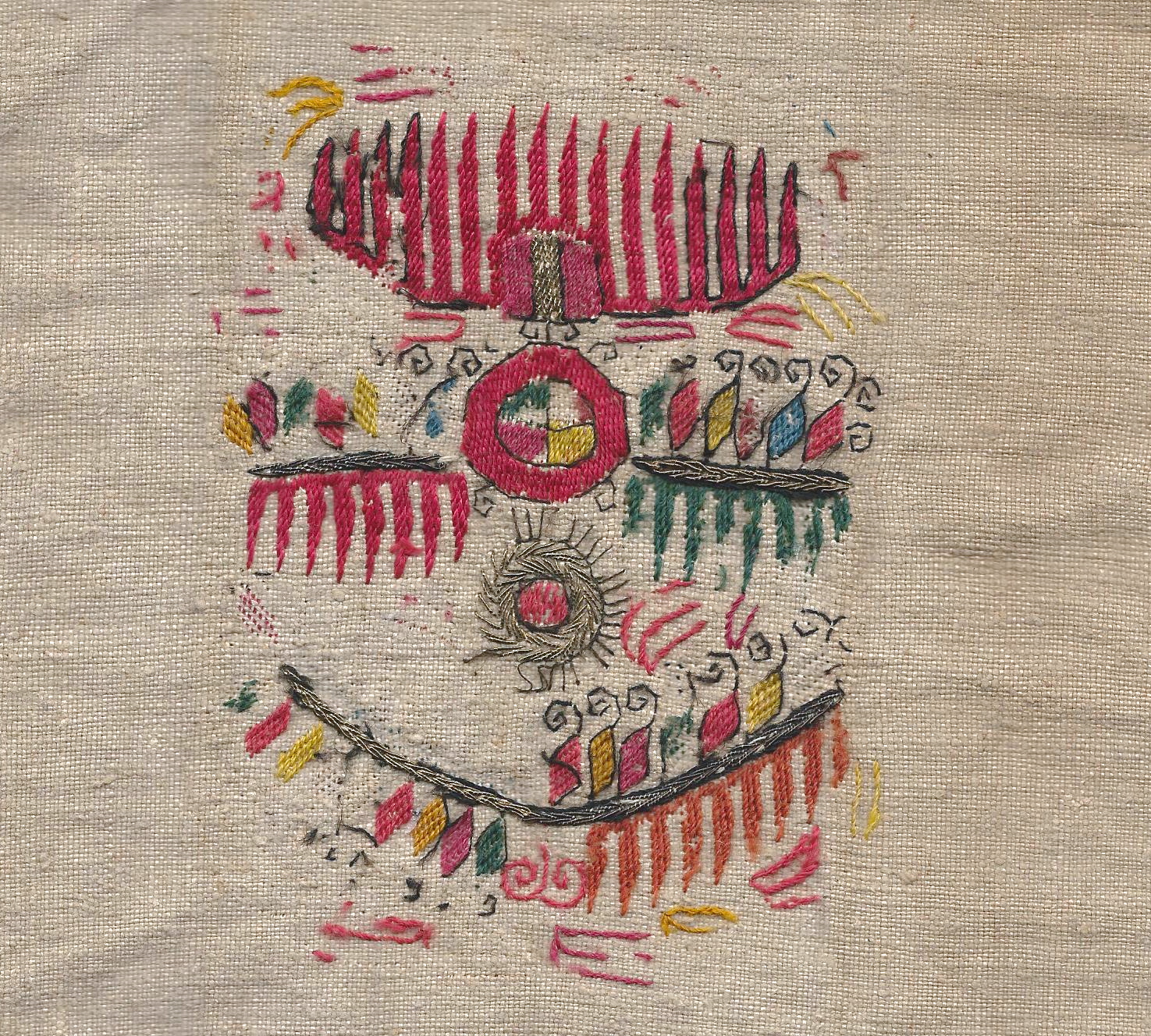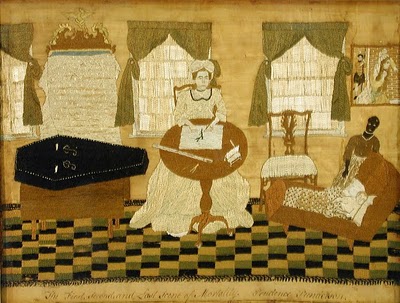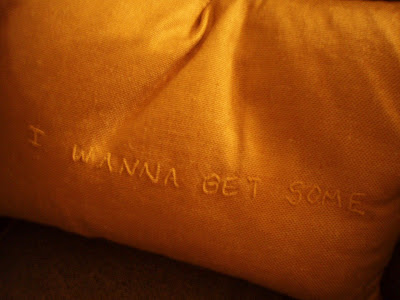Posts from the ‘Textile’ Category
I’ve been researching the narratives of Miao Embroideries. This one I sourced in China. I’m still working on the narrative so I’m going to write about some technical aspects of the embroidery.
This is a reverse appliqué with a plaited couching stitch finish. The off white is the background fabric. The pattern would have been drawn or stenciled on the darker fabric of the foreground, then cut out. The cut-out darker fabric was then sewn directly to the white with a running stitch along the edge of the pattern–a basic running stitch because later it is covered with the plaiting.
The cord or plaiting is made from an inner thread like raffia or hemp and then wound with silk to make the plait. After this is all done, it is couch stitched over the running stitch made earlier around the edge of the fabric.
As for the design, I used to think they were clouds. But now, I think the pattern is based on the butterfly–butterfly antenna and the trailing floating pattern of their flying from one place to another. More about that as soon as I do a little bit more writing. Spend some time staring at the images and let me know what you think. Perhaps someone has written about a similar pattern, let me know.
The embroidery is 25 x 27 not including surrounding frame.
A detail of the fraying edge of the darker cut fabric and the couching stitch.
This fragment jumped off the shelf at me when I looking for Fez Textiles in Paris this past June. Probably Greek late 18th to Early 19th C– a fabulous piece of inspiration- long and narrow with 3 odd but delightful patterns embroidered in silk and metallic threads on a homespun linen. Bellow are details of the embroidery.
Prudence worked on this piece for 7 years and died a year later. She was 26. May we all produce one thing as beautiful as this in a lifetime. This piece inspired Kiki Smith’s exhibition, “Sojourn” at The Brooklyn Museum. I didn’t read much on “Sojourn”as site specific art installations tend to jerk my sense of narrative. This seems as I type a somewhat insolent thing to say, but I believe in questions and in pointing at things.
Sojourn is one of my favorite words and I think that the shortness of Prudence Punderson’s life is not lost on Kiki Smith. Nor was it lost on Prudence Punderson. The initials ‘PP’ are embroidered on the coffin. Sojourn, indeed.
From the Brooklyn Museum’s website:
Prudence Punderson’s remarkable silk embroidery offers a unique perspective on women’s lives during the Federal period. It depicts a well-appointed parlor in which three stages of a woman’s life—birth, adulthood, and death—take place, from right to left. The image is rare in that its central vignette shows a woman engaged in an artistic pursuit rather than a scene of marriage or motherhood. Also rare for the period is the portrayal of an enslaved female of African descent as an integral part of the scene. With its pronounced element of autobiography and sophisticated use of symbolic imagery, Punderson’s iconic embroidery is an inspirational narrative, which provided the model for Kiki Smith’s installation project Sojourn.
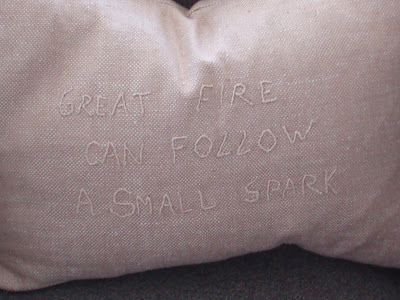
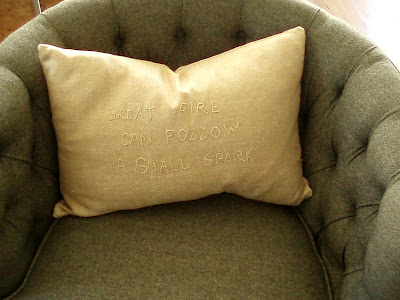
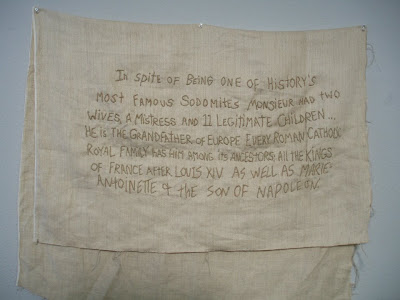
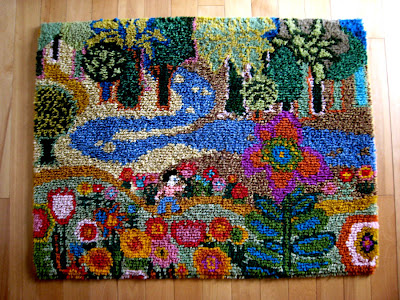 My friend Barbara, a Landscape Architect, up in Eastern Washington sent me a photo of her newest obsession. She found this hook rug at a garage sale last fall. She said she wanted to give the woman a lot more for the rug because it was so beautiful, but she paid the asking $3. Yeah, for $3.
My friend Barbara, a Landscape Architect, up in Eastern Washington sent me a photo of her newest obsession. She found this hook rug at a garage sale last fall. She said she wanted to give the woman a lot more for the rug because it was so beautiful, but she paid the asking $3. Yeah, for $3.
As a kid I did hook rugs and for several years when I lived in Seattle I used to collect them as I had a vision of attaching them all together and making a large patchwork rug, but along the way of moving from one place to the other, and several failed attempts at binding them together I let them all go. I never found one as nice as this one that Barbara found. It is lovely with the bright but muted colors with the sweet folksy scene of a jaunty figure in a landscape. The scale of nature vs. human walking on a winding path through the woods next to a bend in a river-many delightful narratives could be developed from the reading of this piece.

